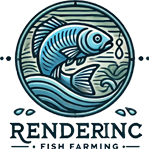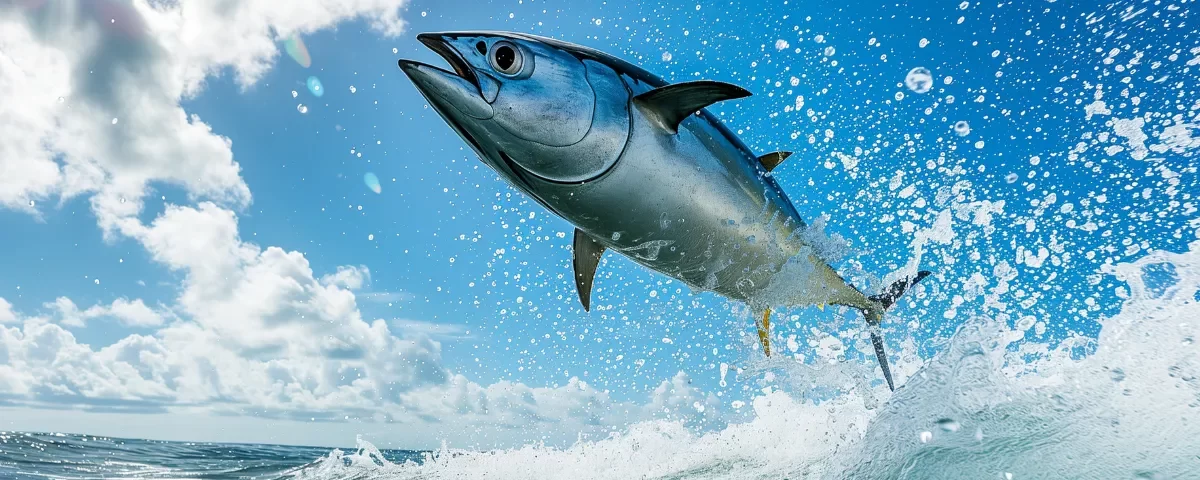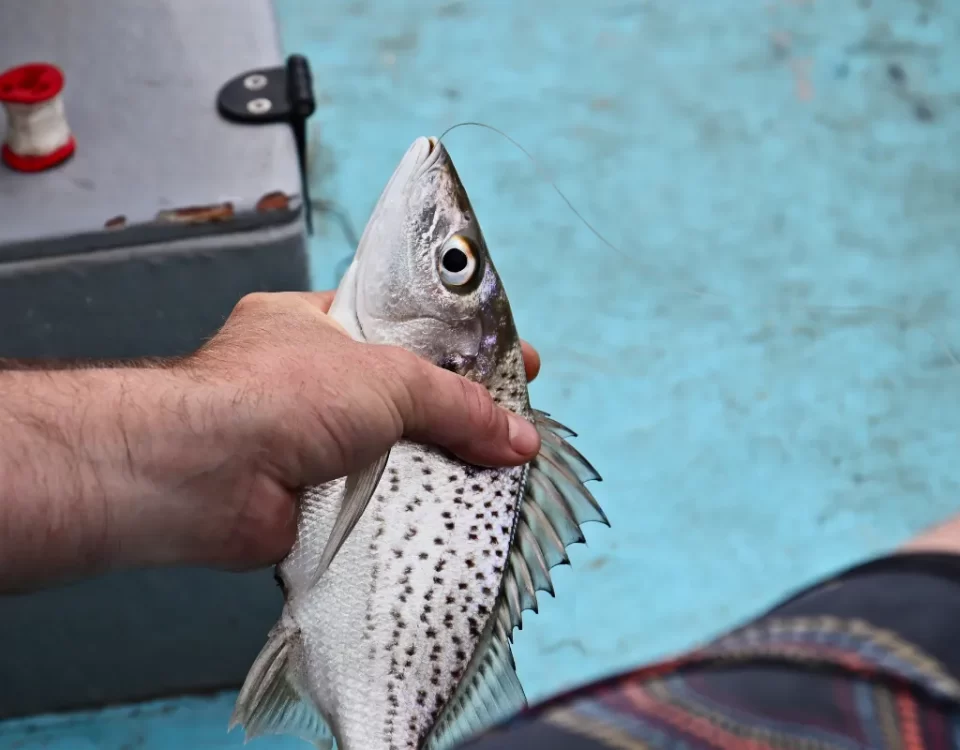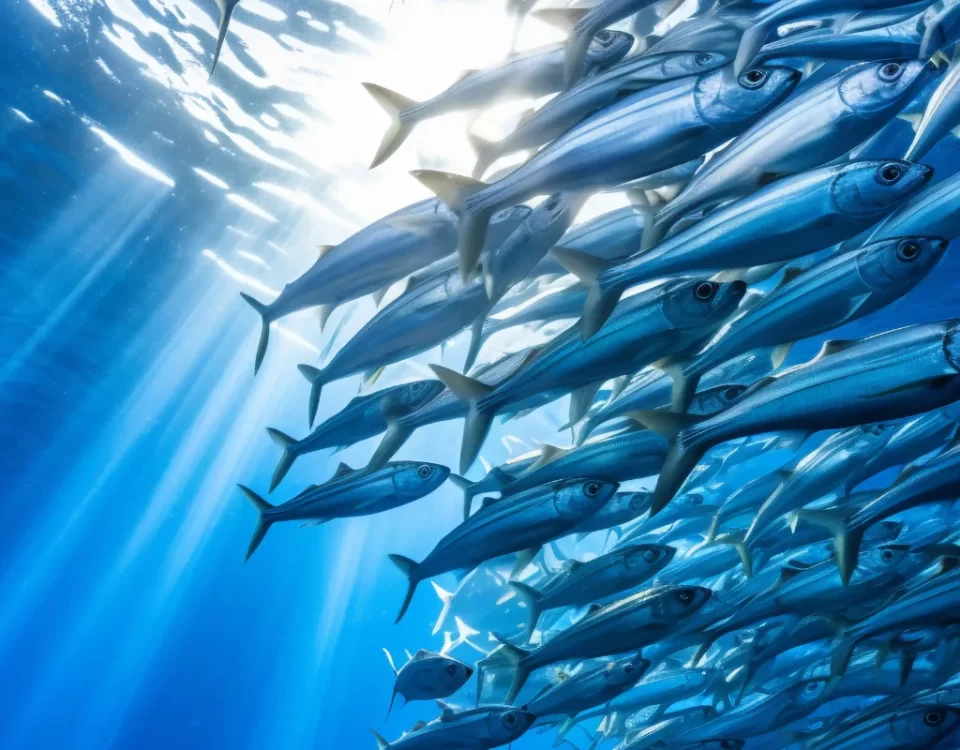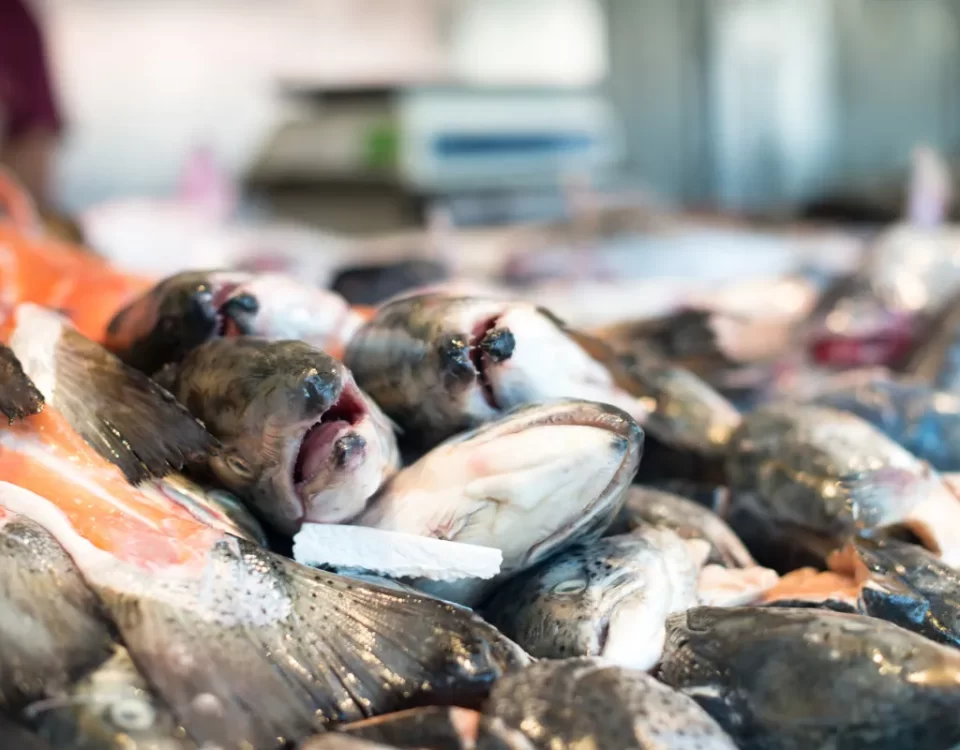Mastering Water Quality Management in Aquaculture

Innovative Feeding Strategies for Healthier Fish in Aquaculture
setembro 16, 2024
Fish Farming Techniques: Traditional vs. Modern Methods
setembro 17, 2024Understanding Water Quality Parameters
Aquaculturists must have a profound grasp of water quality parameters to ensure the health and well-being of their aquatic species. Five essential parameters include dissolved oxygen, pH, ammonia, nitrite, nitrate, and temperature. These factors play a crucial role in the overall water quality of aquaculture systems and directly impact the growth and survival of fish and other aquatic organisms.
Essential Water Quality Parameters:
1. Dissolved Oxygen (DO):
Dissolved oxygen is vital for the respiration of aquatic organisms. Insufficient levels of DO can lead to stress, reduced growth, and even death in fish. Monitoring DO levels regularly is crucial as factors like temperature, stocking density, and aeration can influence DO concentrations.
2. pH Level:
pH measures the acidity or alkalinity of the water. Fish are sensitive to pH fluctuations, affecting their metabolic functions and overall health. Maintaining a stable pH level within the optimal range is essential for the well-being of aquatic species.
3. Ammonia (NH3) and Ammonium (NH4):
Ammonia is produced through fish waste and decaying organic matter. High levels of ammonia can be toxic to fish and other aquatic organisms. Regular monitoring and proper ammonia management are crucial to prevent ammonia toxicity and ensure a healthy environment for aquaculture.
4. Nitrite and Nitrate:
Nitrite is a byproduct of ammonia oxidation, while nitrate results from nitrite oxidation. Both compounds are harmful to fish at elevated levels. Monitoring and controlling nitrite and nitrate concentrations are essential to prevent stress and health issues in aquatic species.
Importance of Monitoring and Maintaining Proper Levels:
Maintaining optimal water quality parameters is essential for the success of aquaculture operations. Deviations from ideal levels can lead to stress, disease outbreaks, and poor growth rates in fish. Continuous monitoring of water quality parameters allows aquaculturists to promptly identify issues and take corrective actions to prevent adverse effects on aquatic organisms.
Tools and Devices for Measuring Water Quality Parameters:
Various tools and devices are available for aquaculturists to measure water quality parameters accurately. These include dissolved oxygen meters, pH meters, ammonia test kits, nitrite test kits, nitrate test kits, and thermometers. Utilizing these tools regularly enables aquaculturists to monitor water quality effectively and make informed decisions to maintain proper conditions for their aquatic species.
In mastering water quality management in aquaculture, understanding and controlling these essential water quality parameters are paramount. By monitoring and maintaining optimal levels of dissolved oxygen, pH, ammonia, nitrite, nitrate, and temperature, aquaculturists can create a conducive environment for healthy growth and development of their aquatic species.
Managing Dissolved Oxygen Levels
In the realm of aquaculture, dissolved oxygen stands as a cornerstone of water quality management, pivotal for the health and productivity of aquatic organisms. The significance of dissolved oxygen lies in its role as a vital factor in the respiration process of fish and other aquatic species. Insufficient levels of dissolved oxygen can lead to stress, impaired growth, or even mortality among the inhabitants of aquaculture systems. Therefore, maintaining optimal dissolved oxygen levels is paramount for the overall success of fish farming endeavors.
Importance of Dissolved Oxygen for Aquatic Organisms
Aquatic organisms rely on dissolved oxygen for their respiratory needs, just as terrestrial animals depend on the oxygen present in the air. Through the process of gill respiration, fish extract oxygen from the water to support their metabolic functions. Adequate oxygen levels are essential for sustaining the life processes of aquatic organisms, including growth, reproduction, and immune system function.
Factors Affecting Dissolved Oxygen Levels in Aquaculture Systems
Several factors influence the levels of dissolved oxygen in aquaculture systems. The primary determinants include water temperature, stocking density, and the amount of organic matter and waste present in the water. Higher temperatures reduce the ability of water to hold oxygen, while overcrowding can lead to increased oxygen demand by the aquatic organisms. Additionally, the decomposition of organic matter depletes oxygen levels through microbial activity, further exacerbating the challenge of maintaining adequate dissolved oxygen concentrations.
Strategies for Increasing Dissolved Oxygen Levels
To address the issue of low dissolved oxygen levels in aquaculture systems, various strategies can be employed to enhance oxygen saturation and promote a healthy aquatic environment. Aeration systems, such as mechanical aerators or air stones, can be utilized to increase oxygen transfer from the atmosphere to the water. Additionally, oxygen supplementation techniques, such as the use of pure oxygen injection, can provide a direct and immediate boost to oxygen levels in cases of acute oxygen deficiency. By implementing these strategies, aquaculturists can effectively manage and optimize dissolved oxygen levels to ensure the well-being and productivity of their aquatic livestock.
Maintaining Optimal pH Levels
pH, a measure of the acidity or alkalinity of water, plays a pivotal role in aquatic environments, influencing the health and well-being of aquatic organisms in aquaculture systems. Aquatic organisms have specific pH requirements to thrive, and even slight deviations from the optimal pH range can lead to stress, reduced growth, or even mortality.
Impact of pH on Aquatic Organisms and Water Quality
In aquaculture, maintaining optimal pH levels is crucial for the overall success of the operation. Fish, shrimp, and other aquatic species have different pH preferences, so it’s essential to ensure that the pH of the water matches their requirements. Optimal pH levels are vital for nutrient uptake, metabolism, and osmoregulation in aquatic organisms. Moreover, pH influences the solubility of dissolved oxygen in water, which is critical for the survival of aquatic species.
Common Reasons for Fluctuations in pH in Aquaculture Systems
Fluctuations in pH levels in aquaculture systems can occur due to various factors, including biological processes, chemical interactions, and environmental conditions. Overfeeding, organic waste buildup, poor water circulation, and inadequate aeration can increase acidity, leading to a drop in pH levels. On the other hand, factors such as algal blooms, decomposition of organic matter, and carbonate buffering can elevate pH levels in the water.
Methods for Adjusting and Stabilizing pH Levels
To maintain optimal pH levels, aquaculturists can employ several strategies to adjust and stabilize the pH of the water. Buffering agents can be added to the water to counteract pH fluctuations and maintain stability. Liming is a common method used to increase pH levels in acidic waters, while acidification techniques can be employed to lower pH levels in alkaline waters. Regular monitoring of pH levels and implementing corrective measures promptly can help ensure a stable and suitable environment for aquatic organisms in aquaculture systems.
Controlling Ammonia and Nitrite Levels
In the realm of aquaculture, mastering water quality management is paramount to the success and well-being of the cultured fish. One of the key parameters that farmers must monitor and control is the levels of ammonia and nitrite in the water. High concentrations of these compounds can have detrimental effects on fish health, leading to stress, reduced growth rates, and even mortality if left unchecked.
Effects of High Levels of Ammonia and Nitrite on Fish Health
Ammonia is a toxic compound that is released into the water through fish waste and decaying organic matter. At high levels, ammonia can cause damage to the fish’s gills and impair their ability to extract oxygen from the water, leading to respiratory distress. Nitrite, on the other hand, interferes with the fish’s blood’s ability to transport oxygen, resulting in a condition known as methemoglobinemia, where the blood loses its capacity to carry oxygen efficiently.
Causes of Ammonia and Nitrite Buildup in Aquaculture Systems
Ammonia and nitrite buildup in aquaculture systems can be attributed to a variety of factors, including overfeeding, overcrowding, inadequate filtration, and poor water quality management practices. Overfeeding can lead to an excess of uneaten food and fish waste, which decompose and release ammonia into the water. Overcrowding exacerbates the issue by increasing the bio-load in the system, putting additional strain on the filtration system’s ability to remove ammonia and nitrite efficiently.
Techniques for Reducing Ammonia and Nitrite Concentrations
Implementing effective biological filtration is a crucial step in reducing ammonia and nitrite concentrations in aquaculture systems. Beneficial bacteria colonize the filter media and convert toxic ammonia into less harmful compounds, such as nitrate, through a process called nitrification. Regular maintenance of the filtration system, including monitoring water parameters and cleaning filter media, is essential to ensure its optimal performance. Additionally, water exchange can help dilute high concentrations of ammonia and nitrite in the system, promoting a healthier aquatic environment for the cultured fish. By combining these techniques and maintaining a keen eye on water quality parameters, aquaculturists can effectively control ammonia and nitrite levels, safeguarding the well-being of their fish stocks.
Managing Nitrate Levels
In the complex ecosystem of aquaculture systems, nitrates play a crucial role as a byproduct of the nitrogen cycle. Fish waste, uneaten feed, and decomposition of organic matter release ammonia, which is converted into nitrates by beneficial bacteria through nitrification. While nitrates are essential nutrients for plants in aquaponics systems, they can pose significant challenges when levels become excessive in traditional aquaculture settings.
Excessive nitrate levels in aquaculture systems can lead to several risks that jeopardize the health of the aquatic inhabitants. High concentrations of nitrates can cause stress to fish, leading to reduced growth rates, compromised immune systems, and increased susceptibility to diseases. Furthermore, elevated nitrate levels can contribute to eutrophication in water bodies, promoting the growth of algae and depleting oxygen levels, which can result in fish kills and disruption of the entire ecosystem.
To effectively manage nitrate levels in aquaculture systems, control strategies focusing on nitrate reduction are imperative. One key method is denitrification, a biological process where certain bacteria convert nitrates back into nitrogen gas, which is released harmlessly into the atmosphere. Implementing denitrification systems such as biofilters or specialized denitrifying reactors can help maintain optimal nitrate levels in the water.
Another effective strategy for controlling nitrate accumulation is through plant uptake. Aquatic plants have the ability to absorb nitrates from the water as a nutrient source for growth. By incorporating aquatic plants like water lettuce, water hyacinth, or duckweed into aquaculture systems, aquaculturists can harness the natural power of plants to help regulate nitrate levels and improve overall water quality.
In summary, understanding the role of nitrates in aquaculture systems, recognizing the risks associated with high nitrate levels, and implementing effective strategies such as denitrification and plant uptake are essential components of mastering water quality management in aquaculture. By carefully monitoring and controlling nitrate levels, aquaculturists can create a balanced and sustainable environment that supports the health and vitality of their aquatic species.
Monitoring and Regulating Water Temperature
In the realm of aquaculture, mastering the art of monitoring and regulating water temperature is a pivotal aspect that can significantly influence the success of fish farming endeavors. The importance of maintaining appropriate water temperatures cannot be overstated, as it directly impacts the growth, health, and overall well-being of aquatic organisms. Different species of fish have specific temperature requirements for optimal growth and metabolism, making it imperative for aquaculturists to closely monitor and control water temperatures within the desired range.
Importance of Maintaining Appropriate Water Temperatures in Aquaculture
Maintaining optimal water temperatures in aquaculture systems is crucial for several reasons. Firstly, water temperature directly affects the metabolic rate of aquatic organisms. Warmer temperatures typically increase metabolic activity, which can lead to faster growth rates in fish. Conversely, colder temperatures can slow down metabolism and growth. Secondly, water temperature influences the oxygen levels dissolved in the water. Warmer water holds less dissolved oxygen, which can be detrimental to fish health. Lastly, maintaining consistent and appropriate temperatures can help reduce stress on aquatic organisms, making them more resilient to diseases and environmental changes.
Impact of Temperature Fluctuations on Aquatic Organisms
Temperature fluctuations in aquaculture systems can have detrimental effects on aquatic organisms. Sudden changes in water temperature can induce stress responses in fish, weakening their immune systems and making them more susceptible to diseases. Furthermore, extreme temperature fluctuations can disrupt reproductive cycles and developmental processes in aquatic species. It is essential for aquaculturists to implement effective monitoring systems and rapid response protocols to mitigate the negative impacts of temperature fluctuations on their fish stocks.
Heating and Cooling Methods for Regulating Water Temperature
Aquaculturists have a variety of methods at their disposal to regulate water temperatures in fish farming operations. Heating methods such as electric heaters, solar heaters, and heat exchangers can be employed to raise water temperatures during colder months or in regions with cold climates. On the other hand, cooling methods such as aeration, shade structures, and evaporative cooling systems can help lower water temperatures during hot weather conditions. Implementing a combination of heating and cooling methods, along with regular monitoring, is essential for maintaining optimal water temperatures in aquaculture systems and ensuring the health and productivity of aquatic organisms.
Implementing Water Quality Best Practices
Maintaining optimal water quality is crucial for the success of any aquaculture operation. Implementing best management practices is essential to ensure a healthy environment for the aquatic species being raised. Proper water quality management involves a combination of proactive measures to prevent issues and quick responses to any problems that arise.
Best Management Practices for Ensuring Optimal Water Quality
To maintain optimal water quality in aquaculture systems, several key practices should be followed. First and foremost, establishing a regular monitoring schedule is essential. This includes measuring parameters such as dissolved oxygen levels, pH, ammonia, and nitrate concentrations. By monitoring these parameters consistently, fish farmers can identify any deviations from the desired levels and take corrective actions promptly.
Another important best practice is maintaining proper stocking densities. Overcrowding aquatic species can lead to increased waste production, which can deteriorate water quality. By stocking the appropriate number of fish based on the system’s capacity, farmers can help prevent excessive organic matter accumulation and reduce the risk of disease outbreaks.
Importance of Regular Water Testing and Record-Keeping
Regular water testing is a fundamental aspect of water quality management in aquaculture. Conducting tests on a routine basis allows farmers to track changes in water parameters over time and detect any trends that could indicate potential issues. Keeping detailed records of water quality data is essential for traceability and can provide valuable insights for improving management practices.
By analyzing historical water quality data, farmers can identify patterns and correlations that may help them make informed decisions about their operations. For example, if ammonia levels tend to spike during a certain time of year, farmers can implement preventive measures before the issue escalates. Additionally, maintaining accurate records can be beneficial for regulatory compliance and certification purposes.
Strategies for Preventing and Responding to Water Quality Issues
In addition to proactive measures, having strategies in place for preventing and responding to water quality issues is crucial. Farmers should develop emergency response plans outlining steps to take in the event of sudden changes in water quality, such as fish distress or algal blooms. These plans should include protocols for water quality testing, aeration, and water exchange if necessary.
Furthermore, implementing Biosecurity measures can help prevent the introduction of pathogens and disease-causing agents into aquaculture systems, which can negatively impact water quality. Quarantine procedures for new stock, disinfection protocols, and biofiltration systems can all contribute to maintaining a healthy aquatic environment. By staying vigilant and proactive, fish farmers can minimize the risk of water quality issues and ensure the overall success of their aquaculture operations.
Case Studies in Water Quality Management
Aquaculture has seen tremendous advancements in water quality management practices in recent years, with some remarkable case studies highlighting successful strategies for maintaining optimal conditions for fish growth and health. One such example is a salmon farming operation in Norway that has implemented cutting-edge technology to monitor and control water quality parameters. By utilizing automated sensors and data analytics, the farm has been able to proactively address issues such as oxygen levels and waste accumulation, resulting in healthier fish and increased productivity.
Lessons Learned from Various Aquaculture Systems
A contrasting case study comes from a shrimp farming facility in Southeast Asia, where traditional extensive aquaculture methods have been adapted to incorporate modern water treatment techniques. Through this transition, the farm has navigated challenges such as disease outbreaks and nutrient imbalances by implementing biosecurity measures and employing biofiltration systems. These lessons emphasize the importance of adaptability and continuous improvement in water quality management practices across different aquaculture systems.
Insight into the Challenges and Rewards of Mastering Water Quality
While the journey to mastering water quality in aquaculture is fraught with challenges, the rewards are significant. Aquaculture practitioners face obstacles such as fluctuating environmental conditions, disease pressures, and regulatory requirements. However, by prioritizing water quality management through comprehensive monitoring, strategic planning, and continuous education, operators can achieve sustainable growth and profitability. The satisfaction of producing healthy, high-quality fish while preserving the aquatic environment is a gratifying reward that transcends the initial challenges faced in the process.
In conclusion, the case studies presented underscore the critical importance of water quality management in aquaculture operations. By learning from successful examples and addressing the complexities of maintaining optimal conditions for fish growth, aquaculture practitioners can enhance their operations and contribute to the long-term sustainability of the industry. I encourage all stakeholders in the aquaculture sector to prioritize water quality as a fundamental aspect of their practices, embracing innovation and best practices to achieve excellence in fish farming.

Michael Rivers is an experienced aquaculture enthusiast with over a decade of hands-on knowledge in fish farming and sustainable aquatic systems. Passionate about promoting eco-friendly practices, he shares his expertise on fish breeding, water management, and the latest advancements in aquaculture technology. Through his blog, Michael aims to help both beginners and seasoned fish farmers achieve success in their ventures while contributing to the growth of sustainable food production.
